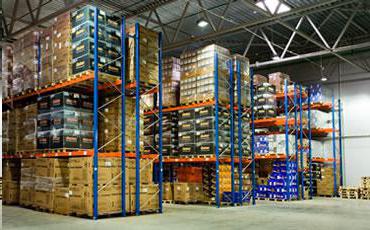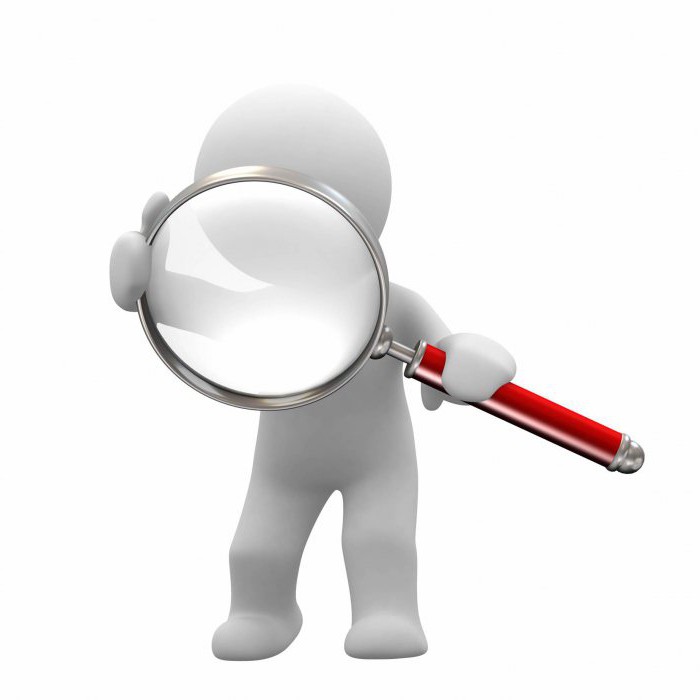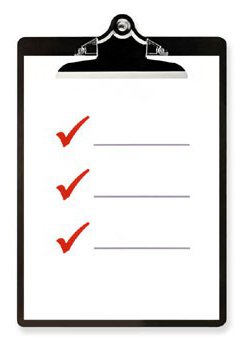Inventory is a procedure during which the company identifies the presence, condition and main properties of inventory, fixed assets and other assets that are owned by the company on a property right, leased by it or are under its control by other legal mechanisms. What are the most important nuances of this procedure? What documents are used in the inventory?

What is the essence of inventory?
Let's start with the conceptual apparatus on the topic that will be discussed in our article. An inventory of the organization’s property is a procedure that involves accounting for inventory held in the company (or inventory) or other assets at the time of the event.
The frequency of such activities is fixed in the schedule approved by the CEO of the company. The inventory is carried out by a special commission, which is also established by the leadership of the company. Its participants, as well as the materially responsible person, check the availability of goods and materials or other assets, if necessary, measure certain properties of goods and resources. There are 3 main types of inventory in a store, in a warehouse, in a manufacturing company — planned, selective, and optional. They differ mainly in terms of time. The content of all types of inventory is generally similar. The goals of their implementation coincide. We study their specifics in more detail.
Inventory goals
The main objectives of the inventory are considered:
- reconciliation of the property owned by the company or held and accounted for by the accounting office in order to ensure its effective storage, as well as to identify assets that are not accounted for;
- determination of the actual volume of material resources involved by the company in production;
- identification of surpluses and shortages of resources owned by the company;
- assessment of the correctness of reflection in the accounting department of a company of information on inventory resources;
- obtaining relevant data on the characteristics of the property of the organization for their subsequent market assessment;
- checking the standards of operation of company resources.
The inventory involves, as we noted above, the establishment of a special commission by the management of the company. We will study what basic functions it performs.
The main functions of the inventory commission
The corresponding internal corporate structure carries out the main types of inventory - planned, selective, and, if necessary - additional checks in the period between the first and second. In this case, the commission may have a permanent status. In turn, the company may also establish working units of the appropriate purpose. Their task is to conduct inventories at enterprises with geographically distributed infrastructure.

The core competencies of the commission
The key competency of the inventory commission is to verify the availability of goods and materials at the enterprise and other assets with the credentials. But, in addition to this, this structure may have powers that are associated with the assessment:
- degree of security of the object;
- the correctness of the conclusion of company contracts with employees on liability;
- the degree of compliance of the positions of employees responsible for the preservation of commodity values, the specifics of those powers that were given to them by management;
- the level of equipment of materially responsible persons with the necessary resources to solve the tasks.
Let us consider in more detail how the inventory is carried out in the company in terms of its content, as well as the reflection of its constituent procedures in special documents.
Inventory Preparation: Key Documents
First of all, you need to prepare for the inspection of goods and materials. For this, the head of the company must issue an inventory order. This local source must be registered in a separate journal.

After the establishment of an inventory commission. It should include representatives of company management, accountants and other competent employees who can carry out a high-level audit of the company's inventory. A separate legal act is recommended to indicate the list of property that is subject to verification. If it is assumed not only an inventory of fixed assets, but also the obligations of the company, their list also needs to be recorded in a special source.
The subject of verification is a comparison of the quantity and characteristics of the values identified by the commission, as well as accounting data. Therefore, at the disposal of employees who will conduct an inventory, there should be a list of goods and materials and other assets in accounting registers. The head of the commission must accept all available documents reflecting income and expenditure operations, and put on them a record reflecting the fact that they are formed before the inventory.
How are inventory results taken into account?
So, the main participants in the procedure in question are the special commission, as well as the materially responsible person. Their main task is to jointly recalculate inventories and other assets, measure them and record the results in accounting documents. There can be a lot of them.

For fixing the results of inventory of goods and materials, for example, the INV-3 form approved by law is used. It is necessary to indicate the total quantity, type, article and other properties of each type of goods and materials. In some cases, the commission may receive new inventories in the inventory process. In this case, information about them is reflected in a separate inventory. At the end of the procedure, these values are capitalized. In turn, in the inventory process, some goods and materials may be subject to leave, for example, if the buyer purchases them. In this case, information about disposal values is also recorded in a separate inventory. A variant is possible in which an inventory of goods in transit, for example, from a supplier’s warehouse located in another city, is required. In this case, data on values is recorded in the form of INV-6, which is also approved by law. A scenario is possible in which the commission reveals goods that are shipped to the customer, but are not paid. In this case, information on the relevant values is entered in the INV-4 form.
An inventory of goods and materials may require accounting for values located in warehouses of other firms. In this case, the INV-5 form is used. When accounting for values in the inventory process of the commission, as well as the financially responsible person, information from primary documents may also be required. If the results of the inspection revealed a discrepancy between the characteristics of goods and materials recorded in fact with the data contained in accounting, then a comparison sheet is drawn up on the basis of another form approved by law - INV-19.
The main document, which records the results of the procedure in question, is an inventory act, sometimes called an inventory. It must be signed by all participants in the audit - representatives of the commission, as well as employees whose competence is to ensure the safety of commodity values. The inventory act must be kept in the company archive for 5 years.
It will be useful to consider how the audit results are drawn up in accounting.
Accounting Inventory
An inventory of property can have 3 possible results - full compliance of the actual data with those contained in accounting, identification of surpluses or shortages. As a rule, the greatest difficulties in practice are caused by the correct reflection in accounting of facts reflecting the presence of excess or missing goods and materials. In the event that it is a shortage - information about it is recorded on account 94.

If the missing inventories and other assets are identified in volumes that do not exceed the established limits of loss, then the corresponding values are written off to the accounts associated with production. But if the shortage in the inventory exceeds the norms of loss, then it is already recorded on accounts owned by the materially responsible person, which subsequently must compensate for the loss of the company.
Accounting, in turn, of surpluses is carried out by means of their correlation with the market value on D-t accounts 20 or, for example, 23 and 44, as well as K-t account 94.
So an inventory is carried out in accounting. But there are still quite a few nuances of its implementation. For example, those associated with the determination of its terms.
Inventory timing
The frequency of the inventory depends on the specific type of inventory values taken into account. In general, it is held in the 4th quarter of the reporting year. That is - from October to December. However, an inventory of fixed assets can be carried out less frequently - once every 3 years. If we are talking about checking library collections, it can be done once every 5 years. In turn, an inventory in retail organizations is carried out quite often - about 1 time per quarter. Retailers at specified intervals can check, for example, warehouses or cash registers. By the time the inventory starts in the company, all those documents that are necessary for the implementation of the procedure in question should be ready.
The duration of the inventory, as a rule, is not strictly fixed in any sources of law. The main thing is to meet the deadlines set for a particular type of commodity value.
Automation of accounting as a factor in the correct inventory
How to conduct an inventory as correctly and efficiently as possible? One of the factors for the successful solution of such a problem may be timely automation of accounting procedures for inventory items. It can be implemented in the enterprise infrastructure through specialized software. Modern solutions of the corresponding type allow accounting for most of the operations associated with the movement of goods and materials within the company. This option allows, first of all, to significantly save time on the preparation and verification of the correctness of the documents used in the inventory.
Which property is required to check?
In the general case, the company carries out an inventory of goods and materials owned by it. However, experts also recommend keeping records of those assets that are not only owned, but also managed by the organization, for example, when it comes to leased property. The main thing is that the information is present in accounting.

In turn, when it comes to company ownership, it can be represented in a wide range of varieties. Most often, fixed assets of the company, intangible assets, stocks, as well as inventory items are inventoried. It is also possible to record the financial obligations of the company related, for example, with the repayment of loans. We will study a number of practical nuances of inventory by the example of the implementation of the appropriate procedure for accounting for fixed assets, intangible assets, and also inventory materials.
OS inventory
How to inventory fixed assets most correctly? First of all, it is recommended to check the availability of the company:
- inventory cards, inventories, registers and other sources of accounting;
- the necessary data sheets and other types of documentation on the OS owned by the company;
- documents for OS rented by the company and those that are stored in it.
If any documents are missing, they must be prepared. If they have errors, they need to be fixed. In the process of inventory of OS, the commission established by the management of the company inspects the available resources, and also records their quantity and main characteristics in the inventory. If we are talking about accounting for machinery and equipment, then in the inventories it is necessary to record their serial numbers according to the data sheet, year of manufacture, purpose, and also capacity.
If the results of the inventory showed that the company has defective operating systems, the commission should draw up an inventory that records data reflecting the fact that the operating systems are not operational, as well as indicating the reason for the corresponding assessment.
In some cases, it may be necessary to include in accounting documents information reflecting a change in the carrying amount of fixed assets due to identified design changes. For example, this may be the improvement of facilities through modernization or, conversely, a decrease in their operational characteristics due to the wear and tear of certain parts.

Inventory of intangible assets
How to take an inventory of intangible assets of a company? The main task of the commission in this case is to check whether the company has documents that confirm the company's right to dispose of certain intangible assets. This may be certificates, certificates, patents, contracts for the transfer of rights, etc. It is noteworthy that the intangible assets include the business reputation of the company. If a company created intangible assets on its own, for example, if it is a computer program, then its presence also requires documentary evidence.
It is important that all types of assets comply with such criteria as:
- lack of direct connection with other property of the company;
- use in the production processes of the company for more than 12 months;
- use as an asset that brings economic benefits to the company.
Inventory of goods and materials
How to carry out an inventory of inventory? The main feature of this procedure is its implementation in relation to the locations of goods and materials. At the same time, the room where the check for availability and research of goods and materials was carried out, as a rule, is sealed. If an inventory of the warehouse is carried out, then the commission usually conducts its work in the presence of the person managing it.
Checks for the presence of goods and materials, determination of their quantity, weighing, and, if necessary, other operations with commodity values. Information on goods and materials is entered in the inventory, which indicates the type of value, their groups, article number and other parameters. Those assets that are available to the company during the inventory are taken in the presence of a commission. However, their capitalization is carried out after verification. Actually, we already said above about this, as well as about accounting for valuables on the way, as well as shipped, but not paid. The most important thing in the inventory of goods and materials is to correctly certify all operations with them through special inventories.
The specifics of checking inventories that are on the way or that have the status of shipped but not paid, as well as those that are in the warehouses of other companies, are the need for the justification of the monetary amounts that are reflected in the accounts. It is important that they are all confirmed by primary sources. For example, with regard to goods and materials in transit, these may be settlement documents. Data on shipped goods and materials can be studied taking into account available payment orders or their copies. Information on valuables stored in the warehouses of third parties may be contained in receipts on acceptance of goods and materials for storage.As we noted above in the article, upon the fact of inventory taking collation statement.
Summary
This is the specificity of taking inventories at Russian enterprises. It is important for the company to draw up the correct documents certifying each stage of this procedure, taking into account the specifics of specific assets. During the inventory, it is necessary to carry out a consistent accounting of the quantity, condition and other key properties of goods and materials, fixed assets, intangible assets, and liabilities. The company's management needs to issue an order for inventory, form a commission and endow it with functions that are best suited to those tasks that will be assigned to the corresponding internal corporate structure.



